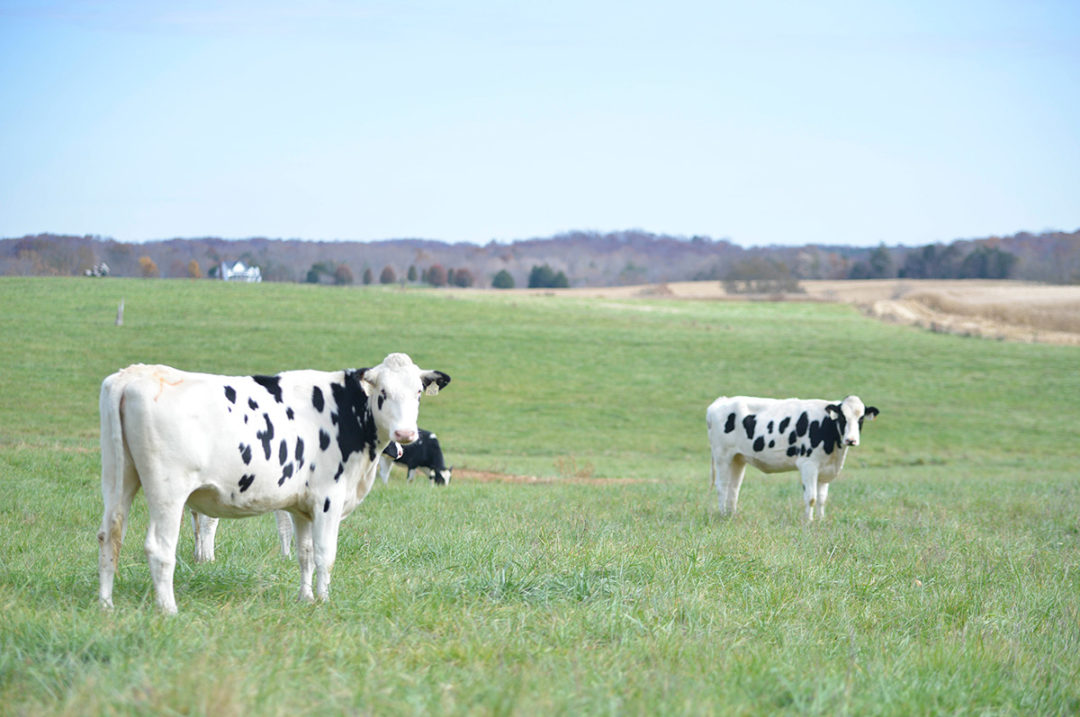Shortening generation intervals
Decades ago, the dairy industry adopted artificial insemination (A.I.) to increase the number of decedents of sires with elite genetic merit. More recently, the generation interval, a measure of how quickly superior genetics can be propagated into the next generation, is able to be condensed with the association of sexed semen and genomics. The use of genomic evaluation allows young females’ genetics to be valued before they join the milking herd. Today IVF technology tightens that generation interval further by bringing new genetics into a herd from heifers as young as six months or cows up to 100 days pregnant, in just one generation. Consequently, a cow can have several offspring from multiple sires, in the same amount of time as just one calf produced through natural breeding or A.I.
When using IVF technology and embryo transfer, producers can make, in one generation, the same genetic progress that would take five generations if natural breeding or AI were used. This progress is a result of the opportunity to utilize superior individuals from both sides (sire and dam) to contribute to the genetic improvement of the next generation.
A more natural approach
With hormone-free IVF technology, no shots are needed to prepare the donors for the aspiration. The oocycte collection is performed with no follicle stimulating hormones (FSH), making the process easier on the animals, less labor intensive, and eliminating the costs associated with FSH.
Cattle begin follicular development at two weeks old and continually grow and regress follicles on the ovary through their entire lives. Unlike conventional embryo production (MOET), which cannot occur until females reach puberty, as part of a more natural process hormone-free IVF technology allows ovum pick-up (OPU) and IVF from heifers as soon as a veterinarian is able to palpate the ovaries – usually as young as 6 months old.
As part of the OPU process, trained veterinary reproductive specialists can visualize a young heifer’s ovaries and follicles with an ultrasound device and use a needle to aspirate the follicles. Oocytes are then collected, cleaned and fertilized with conventional or pre-sorted semen to the sire (or sires) of choice to create embryos that can be transferred into recipient females.
Every six to 10 days a new follicular wave is naturally available for OPU. Consequently, oocytes can continue to be collected weekly from heifers through the second trimester of gestation. For cows, collection can begin 15 days post-calving through the second trimester.
While hormone-free IVF makes it easier on donors, and producers, no technology is a silver bullet to overcome reproductive management issues at a dairy. For effective use of IVF, producers must first ensure their herd health and nutrition programs are promoting good conception rates and low embryonic loss within their current reproduction programs. Attention to vaccination, proper training of personnel, and calving management are essential. Addressing these basics will enhance the maximum potential of IVF.

Capitalizing on the best genetics
Using decision-support tools driven by advanced analytic engines and genomic evaluations, producers can easily and more quickly identify and select animals with their desired performance traits. It allows breeders to capitalize on and quickly reproduce the genetics that best suit the needs of the operation.
Pairing the technology to perform IVF on heifers on young as six months old with a producer’s ability to utilize genomic data leads to a rapid increase in genetic gain. This allows producers to select the elite-performing females far earlier and avoid the delays associated with gathering phenotypical measures and evaluating performance of offspring. To optimize a herd’s potential, the youngest females in the herd can be utilized as donors, creating a much more sustainable population of higher genetic performance cattle.
Expected results
The IVF technology has evolved dramatically in the past 15 years due to advanced embryo media formulations, as well as recipient management and synchronization protocols. A recent study was completed by Teagasc, The Agriculture and Food Development Authority that provides integrated research, advisory and training services to the agriculture and food industry and rural communities in Ireland. In this study, embryos were produced from 40 elite dairy dams using hormone-free OPU technology (Crew, et al 2021). The study evaluated the pregnancy rates of 1,200 lactating dairy cows in nine herds. The cows were synchronized using a standard ten-day Progesterone-Ovsynch protocol. When the cows were in estrus, 20% were bred AI and the remaining 80% of the cows received an embryo seven days later; 50% received a fresh IVF embryo and 50% received a frozen IVF embryo. A parallel beef embryo study was conducted using the same design.
Pregnancy rates, collected on day 32 after synchronized estrus, demonstrated that fresh IVF embryos beat AI conception rate. Of the cows that were bred AI, 43.8% were pregnant, whereas 61.1% of cows that received fresh IVF embryos were pregnant, and 40.1% of the cows that received frozen embryos were pregnant. The results demonstrated higher conception rates using fresh IVF embryos compared to conventional AI. Notably, results indicated that IVF embryo pregnancy rates as a whole (both fresh and frozen combined) were comparable to that of AI pregnancy rates.
Today, cutting-edge, hormone-free IVF technology makes it possible for producers to confidently and successfully utilize the early-identified, elite-performing genetics sooner, by allowing young dairy females to contribute to the herd’s genetic pool earlier, while maintaining their fertility for future breeding opportunities.





